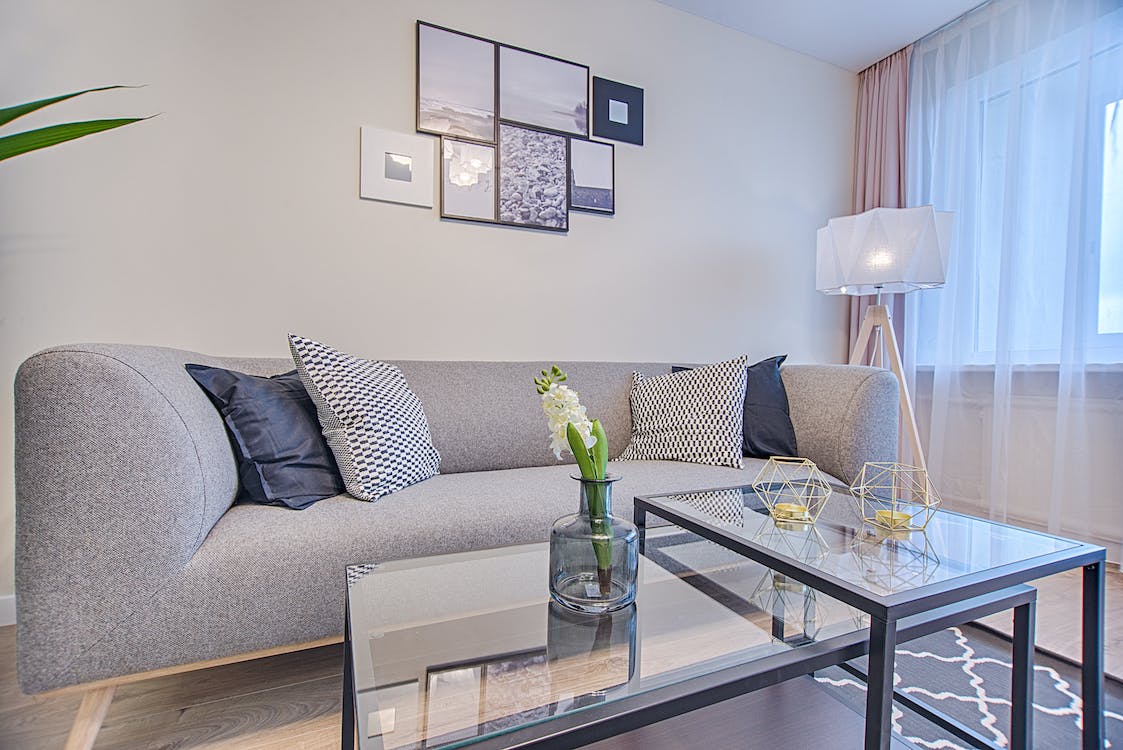Everyone has their favorite colors. But have you ever spent some time wondering how specific colors make you feel a certain way? Can your house color affect your mood? This is the ground of color psychology. The idea is that colors induce mental, emotional, and even behavioral responses and, therefore, can affect our mood.
Some aspects of color psychology are subjective. Perhaps the color yellow makes you nostalgic as it reminds you of your grandmother, for instance. Colorful tile makes you feel the touch of elegance and luxury. But there are other facets of color psychology that have more general effects. Some research indicates that particular colors cause the same type of mood in most people. In this article, we’ll answer why and how certain colors affect your mood.
Can Your House Color Affect Your Mood?
When deciding on interior paint colors for your home, you may be looking for shades that match your personal style. While the colors on your walls reflect your personality, it’s essential to know that the colors you choose can affect your mood and thoughts as well.
Reactions to specific colors and color groups generally produce similar reactions in people. Scientific research has shown that colors can improve our mood, calm us down, or even cause aggressive or depressive reactions.
As stated by Psychology Today, the emotional responses we have to color have to do with the saturation levels of color (the purity of color) and its brightness (the appearance of a light color). When your paint color strikes the perfect balance between saturation and lightness, you can create the kind of reactions you want by spending time in different rooms in your home. Here are some illustrations:
· If your walls painted in a less saturated light green color, you would feel more relaxed and calm.
· If your walls are painted in a very saturated and less bright blue color, it could give you some energy.
Different Home Colors and Their Effects
Colors work in three primary ways: active, passive, and neutral. You can easily match the colors of each room with your personal wishes, tastes, and the purpose of the room. The light colors are spacious and airy, making the rooms appear brighter and lighter. Dark colors are warm and sophisticated. They give large rooms a more intimate atmosphere.
Let’s take a closer look at different colors and learn what they can add to your room and mood. Thus, you will understand if your house color affects your mood.
Red
The red color is robust and is commonly associated with arousal, stimulating hunger, stress, and sometimes even headaches. Red is best suited for areas like the kitchen or dining room because of its association with hunger. Gyms can also be painted in red because it’s exciting and exhilarating vibes. Red may work in living rooms and hallways. But bedrooms are not the best environment for it.
Green
Green is also a great option to produce positive emotions. Sage green can be calm and relaxing, while a darker, more saturated green can invigorate the senses. Try using a less bright and less saturated green in your home office or craft studio, or a less saturated and muted green in your bedroom.
Blue
Blue is an excellent idea for places like the bathroom, den, bedroom, or even the living room. The blue color creates a comfortable, calm, and serene environment. Blue can also help you stay focused, lower your heart rate, and increase your productivity. Blue is not suitable for places like the kitchen or dining room because it can reduce your appetite.
Black
You can paint your walls black, and you won’t feel depressed until you paint the whole room black. Blacks are actually considered the new neutral paint colors because they go with just about anything. Consider painting an accent wall in black to add modern sophistication and relaxation to your bedroom.
White
White is generally associated with cleanliness, which is why it is so prevalent in bathrooms. Sometimes it can create an overly sterile environment, making it an unlikely option for living rooms and dining rooms. Also, due to its clean and modern look, white can be used to highlight other colors.
Brown
Dark colors, such as brown, can make a room comfortable, welcoming, and inviting. Brown tends to be associated with warmth, it is an ideal color to use in the kitchen, dining room, or living room. Brown can also indicate age or stability, and a great way to include it is to use hardwood floors and/or dark wood furniture. However, brown is an unlikely option for the bathroom.
Yellow
Yellow is a cheerful color that can generate positive and optimistic feelings. A soft yellow can be perfect for kitchen walls when you want to add subtle energy to space. Yellow can also stimulate the appetite of you and your guests.
Orange
As humans, we are naturally drawn to warm colors. Shades of orangey-red on the walls can add coziness to a room and make anyone who enters. Try a roasted orange in your dining room to create a nice and warm atmosphere to gather around the table.
Pink
Pink is soft, calming, and warm, making it a good entrant for the bathroom or bedroom. Light pink can be perfect for the bathroom because it can create a healthy glow for many skin tones. Besides, you can use it as an accent color in the living room, contrasting with a darker focal color.
Purple
Deeper shades of purple easily blend with a relaxing atmosphere in the bedroom. The color purple also has connotations of royalty and creativity, making it a choice in living rooms and offices.
Final Thoughts
You have already known, “Can your house color affect your mood.” Color psychology gives us an idea of the impact of specific colors on mental, emotional, and behavioral responses. So, it can be used to guide paint color choices so that the colors you use in a particular room help you achieve a particular mood, purpose, or function. Use this guide to choose paint colors for your next interior painting project.

